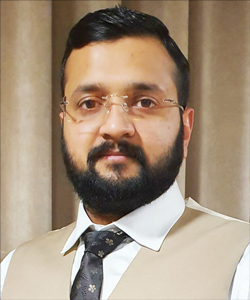Living with Bawasir: Essential Tips and Effective Treatments


Updated on: 4th Jun 2024
Bawasir, commonly known as piles or hemorrhoids, is a condition that affects a significant portion of the population. It is characterized by swollen blood vessels in or around the rectum and anus, causing discomfort, pain, itching, and in some cases, bleeding. Living with Bawasir can be challenging, but with the right information, treatment, and lifestyle changes, it can be effectively managed. This blog will explore essential tips for living with Bawasir and highlight effective treatment options that can provide relief.
Understanding Bawasir (Piles)
Bawasir is classified into two main types: internal and external.
- Internal Hemorrhoids: These develop inside the rectum and are typically painless, though they may cause bleeding during bowel movements.
- External Hemorrhoids: These occur under the skin around the anus and can cause pain, swelling, itching, and discomfort. In some cases, external hemorrhoids can become thrombosed, where a blood clot forms within the hemorrhoid, resulting in severe pain.
The causes of Bawasir are varied and can include chronic constipation, straining during bowel movements, a low-fiber diet, prolonged sitting, and even genetic predisposition. Pregnancy is another common factor due to increased pressure on the veins in the pelvic and rectal area.
Essential Tips for Managing Bawasir

While medical treatments are available for piles, making certain lifestyle adjustments can significantly help in managing the condition and preventing flare-ups.
Increase Fiber Intake
One of the best strategies to prevent and treat Bawasir is to follow a diet high in fiber. Fiber adds volume and softens the stool, which makes it easier to pass without straining. High-fiber foods include:
- Whole grains like brown rice, oatmeal, and whole-wheat bread
- Fruits such as apples, pears, and berries
- Vegetables like broccoli, spinach, and carrots
- Legumes such as beans, lentils, and peas
Stay Hydrated
Water consumption is essential for avoiding constipation, which might worsen Bawasir. Try to drink 8 to 10 glasses of water a day or more to maintain a healthy digestive tract. Water promotes easy bowel motions and softens the feces.
Avoid Straining During Bowel Movements
The veins in your lower abdomen are compressed as you strain during bowel movements, which may cause or exacerbate Bawasir. To keep from straining:
- Go to the bathroom as soon as you feel the urge to have a bowel movement.
- Don’t sit on the toilet for extended periods. Prolonged sitting can increase pressure on the hemorrhoids.
- Use a small stool or footrest to elevate your feet while using the toilet. This can help position your body in a way that makes passing stool easier.
Exercise Regularly
Engaging in regular physical activity can help improve bowel function and reduce the risk of constipation. Aim for at least 30 minutes of moderate exercise daily, such as walking, swimming, or yoga. Exercise also helps in maintaining a healthy weight, which can alleviate pressure on the rectal veins.
Use Over-the-Counter Remedies
For temporary relief, over-the-counter (OTC) creams, ointments, and suppositories specifically designed for hemorrhoids can help reduce pain, itching, and inflammation. Products that contain hydrocortisone or witch hazel can be particularly soothing.
Practice Good Hygiene
Keeping the anal area clean is essential for managing Bawasir and preventing irritation. After each bowel movement:
- Use unscented wipes or damp tissue instead of dry toilet paper to reduce irritation.
- Take warm sitz baths. Soaking the affected area in warm water for 10-15 minutes several times a day can help soothe discomfort and promote healing.
Effective Medical Treatments for Bawasir

When home remedies and lifestyle changes aren’t enough, there are several medical treatments available to manage and treat Bawasir. The severity of the condition will determine the most appropriate treatment option.
Non-Surgical Treatments
For less severe cases of Bawasir, non-surgical treatments can provide effective relief.
- Rubber Band Ligation: This is one of the most common non-surgical procedures for treating internal hemorrhoids. A small rubber band is placed around the base of the hemorrhoid to cut off its blood supply, causing it to shrink and fall off within a few days.
- Sclerotherapy: In this procedure, a chemical solution is injected into the hemorrhoid, causing it to shrink and eventually disappear. It is less invasive than surgery and works best for small internal hemorrhoids.
- Infrared Coagulation: This involves using infrared light to create scar tissue in the hemorrhoid, cutting off its blood supply and causing it to shrink.
Surgical Treatments
In more severe cases, or when non-surgical treatments are ineffective, surgical procedures may be necessary.
- Hemorrhoidectomy: This is a surgical procedure where the hemorrhoids are completely removed. It is considered the most effective treatment for large or severe hemorrhoids but requires a longer recovery period.
- Stapled Hemorrhoidopexy: This procedure, also known as stapler surgery, involves using a special stapling device to remove hemorrhoid tissue and reposition the remaining tissue in the rectum. It is less painful than a traditional hemorrhoidectomy and has a quicker recovery time.
- Kshar Sutra Therapy: An Ayurvedic treatment, Kshar Sutra involves tying a medicated thread around the hemorrhoid to cut off blood supply. It’s a popular treatment for piles in India and has minimal side effects.
When to See a Doctor
While home remedies can be effective for managing mild cases of Bawasir, there are certain situations where medical intervention is necessary. If you experience any of the following symptoms, it’s important to seek medical advice:
- Severe pain or discomfort
- Rectal bleeding, especially if the blood is dark or mixed with stool
- A prolapsed hemorrhoid that cannot be pushed back inside
- Persistent symptoms that don’t improve with home treatment
Early medical intervention can prevent complications and ensure effective treatment.
Conclusion
Living with Bawasir can be uncomfortable, but with the right combination of lifestyle adjustments and medical treatments, it can be effectively managed. Incorporating high-fiber foods into your diet, staying hydrated, and practicing good hygiene are essential steps in preventing flare-ups and reducing discomfort. For those with more severe symptoms, non-surgical and surgical treatments are available to provide relief and promote long-term healing.
It’s important to remember that Bawasir is a common condition, and there’s no need to suffer in silence. By following these essential tips and seeking professional medical advice when needed, you can live comfortably and confidently with Bawasir.
Meet Our Specialists

Dr. Raj Kumar Garg (B.A.M.S.)
40+ Years of Experience

Dr. Rahul Garg (B.A.M.S.)
15+ Years of Experience

